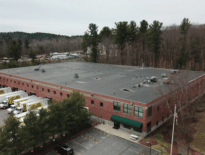A passenger rail expansion to western Massachusetts could attract 278,000 to 469,000 riders per year at a cost ranging between $2.4 billion and $4.6 billion, but the long-sought project will find it very difficult to attract federal funding, a new analysis says.
State Department of Transportation consultants presented a new report Wednesday with updated estimates for the proposed commuter rail extension, another key milestone as state officials weigh whether and how to expand regular passenger rail service west of its current terminus in Worcester.
All three options still on the table would feature new stops in Palmer, Springfield, Chester and Pittsfield, offering a ride from Berkshire County to Boston in roughly three hours.
The presentation before the East-West Passenger Rail Study Advisory Committee offered more details about the project, but the consultants conducting the study for MassDOT stressed that the latest numbers cast doubts on whether federal funding – essential to the project’s viability – will be accessible.
The proposal’s ratio between benefits and costs is only about one-tenth of the level needed to be considered “competitive” in federal grant programs, according to Ethan Britland, the study’s project manager.
“Federal funding rules say that a [benefit-cost analysis] of 1.0 or higher makes it more competitive for federal funding, so we’re only at about 10 percent,” Britland said. “As we all know, these are very expensive cost estimates, so federal participation, we feel, is key for any future project development that may happen. But with BCAs this low, it would be challenging for federal competition.”
After receiving initial estimates for six different options, the committee selected the three still in the running to receive additional examination.
The first of those three would use and upgrade existing rail tracks west of Worcester in order to run up to seven weekday round-trip passenger trains. That project would carry a cost of about $2.41 billion in 2020 dollars and, by 2040, draw 278,300 to 358,250 annual boardings, according to the study.
Both of the other two options call for constructing new stretches of track alongside the existing railways in the west and running up to nine weekday round-trip trains.
One of those could draw 349,350 to 416,050 riders per year after a construction cost of $3.86 billion, while the other — which involves realignment as well as construction — would attract 391,200 to 469,000 riders with a construction price tag of $4.62 billion.
The cheapest option could offer an average Pittsfield-to-Boston trip in three hours and nine minutes, the middle option could do that trip in two hours and 59 minutes, and the most expensive design could complete the west-to-east journey at an average time of two hours and 49 minutes, consultants estimated.
Travel times and cost projections for tracks west of Springfield and east of Worcester are the same in all three models, with variations between the options stemming from the rail link between those two cities.
Estimates do not, however, account for the COVID-19 pandemic and what long-term changes it could prompt in commuting patterns or demand for rail service.
“It’s definitely a consideration for any future work, but it’s not included in this particular study,” Britland said.
The MBTA does not offer rail service west of Worcester even though tracks run through the region for freight trains and for an Amtrak route to Chicago.
Western Massachusetts leaders and constituents have long pushed for access to passenger rail service, arguing that it could help all parts of the state by granting residents of more rural communities access to employment in the greater Boston region and opening up lower cost-of-living communities to those who work in the more expensive metropolitan area.
Advisory committee members criticized an earlier version of MassDOT’s study for basing ridership projections on current commuting data rather than considering how the availability of new service would encourage large-scale shifts.
The department then returned with an updated estimate showing greater ridership.
Kimberly Robinson, executive director of the Pioneer Valley Planning Commission, urged the study team on Wednesday to examine broader economic development effects the rail expansion could carry.
“It is imperative that we look at the economic benefits of this type of infrastructure development,” Robinson said. “It is key to really understanding the full picture, because what we’re building, I believe, is opportunity and opportunities in many different ways.”
The project team will submit a draft report summarizing its findings and the advisory committee’s recommendations Oct. 16, then release the document for a 30-day public comment period before publishing the final report by Nov. 30.
Funding options remain unclear, though most stakeholders have argued that federal support will be key.
Congressman Richard Neal, a longtime backer of the effort who chairs the House Ways and Means Committee, said a $1.5 trillion infrastructure package House Democrats proposed would create a five-year, $19 billion grant program for which East-West Rail could compete. Former Vice President Joe Biden, the Democratic candidate for president, has also put forward a $2 trillion infrastructure and energy plan that promises to “spark the second great railroad revolution.”
The Massachusetts Senate’s version of a multi-year transportation bond bill also called for setting aside at least $50 million for the rail project. The House did not include similar language in its version of the bill, and both proposals have been in a private conference committee for negotiations since July.







